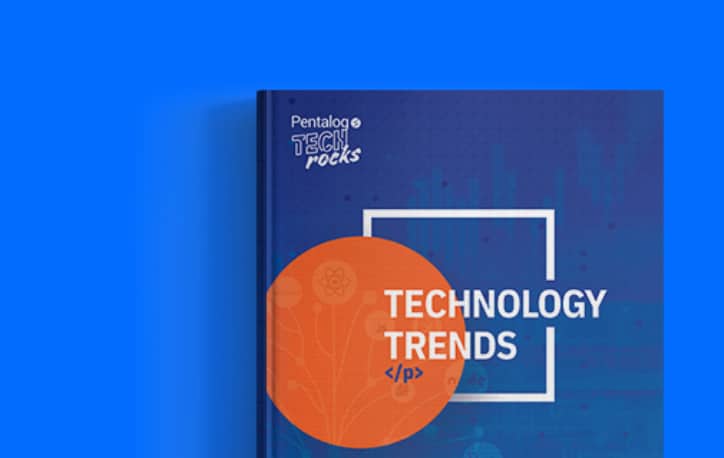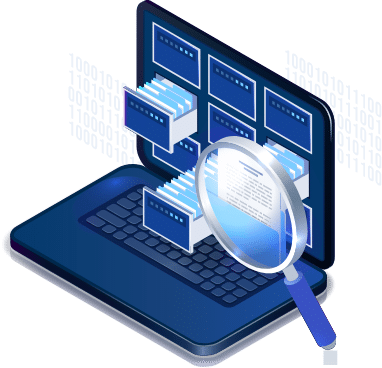Fewer than half (49%) of data practitioners have high trust in their data. The rest are navigating critical business decisions with incomplete, inconsistent, and inaccurate data.
Dirty data is a silent saboteur. It derails decisions, disrupts growth, undermines strategy, and erodes competitive advantage. The solution lies in data cleaning. Data cleaning ensures that your data work for you, not against you. Enterprises that fail to prioritize data cleaning are left behind in the modern data-driven economy.
What is Data Cleaning?
Data cleaning, also known as data scrubbing or data cleansing, is a process that makes data usable. It “cleanse” data that is raw, unstructured, and filled with duplicates to ensure it provides valuable, useful information.
Data cleansing is the foundation for reliable business intelligence. It ensures that data across your organization is accurate, consistent, and ready for analysis. The process of data cleaning for enterprises involves:
- Deduplication:Removing redundant records to eliminate unnecessary repetition across datasets.
- Erroneous Data Correction: Fixing incomplete, inconsistent, or invalid data, such as misspelled names, incorrect phone numbers, or out-of-date customer contact information.
- Standardization: Ensuring uniform formatting across data entries (e.g., addresses, phone numbers, and date formats) to facilitate easy comparison and integration.
- Data Transformation: Converting data from a messy state into a format that makes it usable for analysis, reporting, and decision-making.
With effective and regular data cleaning, your data sources will be prepared for its intended use – free of damaging errors and messy mistakes.
How Does Data Cleaning Help Businesses?
Data cleaning for enterprises (or any business organization, for that matter) is not just a back-office IT task – it’s a business-critical process that directly impacts every department.
Departments, across the organization, collect data from a range of connected applications and activity logs and each of these departments need clean records for effective data analysis, statistical report creation, and making sound strategic business decisions.
Here’s how data cleaning can help different departments of your enterprise:
1. Enhancing Data Compliance
In an age when governments across the world are regulating data collection, organizations need to make sure that they are following data regulations and are data compliant. Clean data minimizes the risk of legal penalties by maintaining accurate, up-to-date, and valid records. For instance, an e-commerce retailer could avoid penalties from the government by ensuring their customer data meets GDPR privacy regulations, such as up-to-date, clean, and accurate records and properly anonymized sensitive information.
2. Unifying Disparate Data Sources
In a survey of data experts, 63% participants reported that their company uses more than 50 different sources of data. With multiple data sources, there’s always a high possibility for duplicates and inconsistencies as various sources may collect and store data differently. For example, if marketing and customer service use different CRMs or systems to record the contact details of an entity, it means the company has to deal with duplicated data entered in different formats and styles.
Data cleaning consolidates and standardizes these sources to provide you with a single source of truth (reliable data). It prevents overlap in datasets and ensures smooth handoffs between teams.
3. Improving Customer Service
A customer service department failing to address customer issues due to wrong, incomplete or invalid address data.
An email sent to the wrong ID.
An email using the wrong spelling or name of the customer.
These are all examples of how bad data can hamper customer service. Clean data will ensure that you have the right and updated contact information to deliver optimal services.
4. Enhancing Operational Efficiency
Duplicate records, formatting errors, and invalid entries slow down workflows and hinder automation efforts. Clean data enables companies to streamline their processes – and we all know that clearly defined processes help businesses reduce inefficiencies and focus on what really matters.
Take, for example, our client Zurich Insurance that improved operational efficiency and increase their ROI by identifying errors in their data and cleaning it of duplicates, typos, and other errors that mess up the records.
5. Empowering Marketing Efforts
No other department in an organization is tasked with the burden of maintaining high-quality data than the marketing department. Whether it’s personalizing campaigns, segmenting audiences, analyzing campaign ROI, or any other marketing activity, consumer data is at the forefront. Clean data ensures the right message reaches the right audience. Without it, emails can bounce, ads can target the wrong demographics, and leads can go cold, eventually leading to campaigns failures.
6. Strengthening Sales Insights
Sales data is the most important data that gives an organization details on ROI, revenue and profitability. And sales teams rely on clean data to track these KPIs accurately. By cleaning and deduplicating sales records via appropriate data cleaning tools for enterprises, organizations gain clear visibility into their pipeline, which then allows for better forecasting and strategy execution.
These are just some very basic examples of the consequences of bad data for enterprises. The day-to-day struggles companies experience with poor data quality are deeply ingrained in business processes and take considerable effort from managers and executives to solve.
If an organization makes data cleaning a priority, they will be able to avoid all these problems and avail the benefits of high-quality, clean data.
Why Don’t Businesses Clean Data, Then? Key Challenges in Maintaining Data Quality
Despite knowing the importance of data quality, many businesses struggle to maintain it – because it’s no easy task. Organizations face several challenges that can derail their data cleaning efforts and compromise data integrity and overall quality. Some common challenges pertaining data quality and data cleaning for enterprises include:
1. Data Volume
Enterprises handle massive datasets, with the total volume often running into terabytes or petabytes. Handling such large datasets can be overwhelming, especially when data comes from multiple sources with varying formats and structures.
2. Data Complexity
Different data types – structured, unstructured, semi-structured – require different data cleaning techniques and approaches. For instance, cleaning structured data may involve deduplication and validation, while unstructured data often requires text parsing, sentiment analysis, or advanced preprocessing. This diversity adds complexity to the data cleaning process.
3. Time and Resource Constraints
Data cleaning for enterprises can be time-consuming and resource-intensive, especially when performed manually or without the aid of automated tools. For organizations with tight deadlines or limited data teams, maintaining consistent data quality can feel like an uphill battle. This challenge becomes even more pronounced when you take into account the fact that cleaning is an ongoing process and not a one-time task.
4. Manual Data Entry
Human error is inevitable in manual data entry. Issues like typos, missing fields, and inconsistent formatting introduce inaccuracies that compound over time and create problems in efficient data processing. For example, entering “USA” in one record and “United States” in another can create discrepancies that disrupt data analysis.
5. Data Decay
Data isn’t static – it decays over time. For example, customer contact information can become outdated due to job changes, relocations, or email deactivations. As a result, the data loses its reliability and become unusable for decision-making.
6. Lack of Standardization
Inconsistent data formats, naming conventions, and field structures make it difficult to integrate and analyze data effectively. For instance, inconsistent date formats (MM/DD/YYYY vs. DD/MM/YYYY) or varied address formats create errors during aggregation or reporting.
The lack of predefined standards often leads to discrepancies and inefficiencies during the cleaning process.
7. Scalability Challenges
Maintaining data quality at scale becomes increasingly challenging without robust processes or tools. Enterprises often struggle to keep pace with the sheer volume of incoming data, which leads to bottlenecks and declining quality over time.
8. Limited Resources and Expertise
Many organizations lack the dedicated resources or expertise required to tackle data quality issues. Whether it’s a shortage of skilled data professionals or insufficient budgets for advanced tools, these limitations hinder progress and leave businesses vulnerable to bad data.
9. Bad Data Governance
Poorly defined roles and responsibilities in managing data quality can lead to inconsistent cleaning practices and, eventually, to siloed data. A lack of accountability further exacerbates the issue by leaving data vulnerable to quality lapses.
10. Resistance to Change
Introducing new tools, technologies, or workflows for data cleaning can face pushback from teams accustomed to existing practices. Employees may view these changes as disruptive, complex, or unnecessary, especially if they lack proper training or see limited immediate value. Overcoming this resistance is essential to ensure consistent and effective cleaning processes.
Overcoming Data Challenges Isn’t One-Time Task
Maintaining data quality is an ongoing process. Recognizing the challenges is just the first step toward addressing them. By investing in the right technology, establishing clear governance policies, and fostering a data-driven culture, business enterprises can mitigate these issues and build a foundation of reliable, high-quality data.
What Makes High-Quality or Clean Data?
Before we discuss how to overcome the various data challenges enterprises face, it’s important to establish what makes data high-quality or clean.
There are a few “standards” that are widely used in the industry to measure data quality. The whole purpose of data cleaning for enterprises is to achieve these standards which can be defined as any data that is:
1. Valid
There are certain rules applied on data sources. Data validity means that the information at hand adheres to those predefined business rules or constraints, such as:
- All addresses must include ZIP codes.
- Phone numbers must be written with country and city codes.
- Critical fields, such as “Last Name” or “Email Address,” must not be empty.
- Unique Identifiers, such as customer IDs, should remain distinct across records.
Data fields that do not meet these validity rules are considered invalid. For example, addresses without complete ZIP codes are considered invalid. Using invalid data can introduce inconsistencies and errors in downstream processes. Therefore, data validation, i.e., ensuring invalid data is highlighted and rectified before data is used any further, is a big part of data cleaning.
2. Accurate
Data accuracy reflects how closely data matches real-world values. Even small data errors and discrepancies, such as spelling mistakes, typos, or character mistakes, can undermine trust and utility. For instance, a name records as “Cath” instead of “Catherine” or “Matt” instead of “Matthew” introduces inaccuracies that may propagate through systems and disrupt processes.
3. Complete
Completeness measures whether a dataset is fully populated or is missing values. For example, evaluating data completeness may involve considering if:
- All phone number fields are filled out.
- All unique identifier fields, such as social security numbers and customer IDs, are complete.
Incomplete information or missing data values create blind spots in analysis and reporting, which then hinders effective decision-making.
4. Consistent
Data consistency involves ensuring uniformity across datasets. For example:
- Phone numbers should follow a single format, such as, all with a “+” prefix or “OO” for international dialing.
- Date formats – MM/DD/YYYY vs. DD/MM/YYYY – should remain standardized.
Data consistency means ensuring that only one method is used for all data records because inconsistent data can disrupt analysis, reporting, and integrations and lead to skewed insights.
5. Timely
Timeliness evaluates how often is your data updated or cleaned. Many companies simply neglect their data once they’ve collected it or used it for its intended purposes. Most only clean data for a report or analysis and then leave it on the backburner while new data keeps piling up. Eventually, this old data becomes obsolete. For example:
- Customer contact information can become outdates due to relocations, job changes, or deactivated accounts.
- Old data may also create duplicates or redundancies when merged with newer records without cleaning.
Regular maintenance ensures that your data stays relevant and avoids creating bottlenecks in your workflows.
Setting Data Quality Benchmarks
A successful data cleaning framework for an enterprise leverages these five data quality measurement benchmarks to maintain and improve data quality. Whether you’re optimizing customer records, financial data, or operational databases, aligning your data cleaning efforts with these standards ensures that your data is both clean and actionable.
How Can Business Enterprises Achieve Data Quality?
Bad data often remains unnoticed until a failed initiative, a flawed report, or a massive marketing blunder gives a harsh wake-up call. The ensuring panic can lead to short-sighted decisions, such as relying on ad hoc data scrubbing tools instead of adopting sustainable, long-term data cleaning solutions.
After having worked with 4,500 enterprises across the globe, here’s what we suggest you can do to avoid this trap and achieve and consistently maintain high-data quality:
1. Develop a Data Quality Management Plan
Before you seek executive buy-in or invest in data cleansing tools, it’s critical to make a data quality management plan. This plan should diagnose the root causes of data quality issues and outline a roadmap for addressing them. Key components of a data management plan include:
- Defining the scope of data quality problems.
- Identifying roles and responsibilities for data governance.
- Outlining software solutions and data quality standards to implement.
A well-crafted plan ensures that your data quality initiatives are proactive, not reactive.
2. Search for the Right Data Cleaning Tools
There are dozens of data cleaning tools for enterprises in the market, but very few of them are affordable and provide a holistic solution. To maximize efficiency, look for a solution that offers:
- Comprehensive functionality, such as data matching, deduplication, cleaning, and merging.
- Scalability to meet evolving business needs.
Data Ladder’s flagship data quality tool has been a trusted choice for global organizations like HP, Deloitte, Zurich Insurance, and thousands of others for not only cleaning but also matching, deduping, and merging their data.
3. Fix Data Errors at the Source
Raw data is inherently bad data. It could be due to human errors, system glitches, poor data collection methods, or a range of other reasons – the possibilities are endless. However, fixing these issues at their source, i.e., in your primary database, ensures that bad data doesn’t proliferate. Implement solutions such as:
- Real-time validation to catch errors during data entry.
- Automated tools that flag inconsistencies as data flows into your systems.
Addressing root causes minimizes long-term maintenance and prevents bad data from becoming a recurring issue.
Key Questions to Guide Your Data Quality Strategy
As you create your plan, use the following questions to evaluate the state of your organization’s data:
- How clean is our existing data?
- What are the most common problems plaguing it?
- What are some of the most challenging problems teams face when trying to use data?
- What systems or checks are in place to manage the problem of data quality?
- What kind of cleansing or data maintenance process is being followed?
- Can this data be trusted enough to give reliable information?
- Does our data meet its intended purpose?
- How can we implement and maintain data quality standards be across the organization?
- Is current data quality affecting any of your core processes?
- How can we achieve a single source of truth?
If your answers to these questions indicate significant flaws in your data, you will need to clean your data in order to become operationally more efficient.
Best Practices for Maintaining Data Quality at Enterprise-Level
Remember the old adage “prevention is better than cure?” Well, it applies to the data world as well. As companies embrace big data and data lakes, it’s necessary to ensure that you have the right parameters in place to prevent raw, unstructured data from hampering your business operations.
Here are some recommended best practices to ensure high-quality data:
1. Prioritize Data Input Controls
Have you ever noticed how sometimes you fill a web form that specifically asks for a work email and not a random Gmail account? That’s an example of front-end data input control. While it doesn’t ensure 100% accuracy (a lot of people write fake emails), it will still help you considerably when you’re sorting relevant values from irrelevant data.
Implement such front-end, customer-facing controls, validations, dropdowns, and required fields to minimize the collection of bad data.
2. Always Clean Data Before Generating a Report
You may be tempted to pull out a report directly from a database in a quick attempt to satisfy your boss, but don’t do that. If you do this, you risk presenting flawed insights due to duplicates, missing values, or outdated information. Make it a practice to clean and validate your data before every report, campaign, or analysis. Alternatively, maintain a routine for periodic data cleaning or upgrade to keep your datasets consistently reliable. You don’t want to end up re-doing an extensive report work just because you missed tackling duplicates or other errors in your data.
3. Use Real-Time Data Cleaning Tools
Real-time data cleaning tools can act as a gatekeeper, and ensure that flawed data never makes it into your systems. These tools automatically identify and rectify issues during the data ingestion phase, which minimized the workload for downstream data cleaning. Real-time cleaning also prevents inaccuracies from propagating through your workflows – thus, saving valuable time and resources.
4. Centralize Data Sources
Disparate data sources are a primary cause of many data problems, such as data inconsistencies and redundancies. To address this, sync your data sources to create a centralized repository. For example, use a single CRM for sales, marketing, and billing to reduce duplication and ensures everyone works with the same dataset. Centralization not only helps you keep your data clean but also creates a unified source of your organization.
Why These Practices Matter?
Clean data is mandatory for business success in this digital and data-driven age. Dirty, inconsistent, or incomplete data undermines your ability to derive meaningful insights, make informed decisions, and compete effectively. If your goal is to become truly data-driven, your data must be good enough – accurate, complete, and ready for use – at all times. Bad, dirty, messy data will take you down.
Using a Self-Service Data Cleansing Tool
Once you know you have bad data, it’s tempting to take immediate action. But don’t do that! Don’t immediately drag your IT resources or hire expensive developers to start building an in-house software. Building a data cleaning tool for an enterprise – one that works efficiently and meets the criteria for quality data – is a complex, resource-intensive process that can take years to perfect.
Instead of diverting your resources toward creating custom software, consider using a self-service data cleansing tool. These tools are designed to address your data quality challenges efficiently and cost-effectively.
In-House vs. Best-in-Class Data Cleaning Solutions
The Pitfalls of In-House Solutions
Developing an in-house data cleaning solution may seem like the best approach at first, but it’s often restricted by available talent, time limitations, costs, experience, and several other factors. Building an in-house software, especially for an enterprise-level organization, often results in:
- High Costs: Custom solutions can exceed $250K annually due to development, testing, and maintenance.
- Wasted Time: Your team spends countless hours creating and refining algorithms, which can delay other critical projects.
- Inconsistent Result: Unless meticulously crafted, tested, and refined, in-house data tools may lack the accuracy and reliability of commercial alternatives.
- Ongoing Talent Costs: managing the specialized talent needed to maintain and improve these solutions adds to the financial burden.
Data cleaning for enterprises, despite being an important task is an incredibly mundane one. Your experts will be wasting hours of their productive time in the creation of algorithms that will either be a hit or a miss. Trials, tests, inaccurate results, and the ballooning talent management costs will become additional problems you’ll have to deal with. This is why it’s better to use an automated data cleansing tool that can do the job without the involvement of any additional talent.
The Advantages of Automated Data Cleaning Tools for Enterprises
Automated data cleaning tools eliminate these challenges by offering a proven, scalable, and efficient approach. With a powerful solution like DataMatch Enterprise, you can:
- Automate cleaning schedules across all data sources.
- Remove typos, errors, and inconsistencies in your datasets efficiently and quickly.
- Deduplicate records and match lists accurately.
- Integrate multiple data sources for seamless real-time cleaning.
- Standardize data and ensure consistency across sources.
- Validate address and contact data.
- Get the job done at ten times lower the price.
Take Action Now!
Bad data is costing your business a lot more than you think – both in terms of operational inefficiencies and missed opportunities. With data scrubbing tools like DataMatch Enterprise, you can resolve your data quality challenges and maintain clean, accurate datasets to make truly informed decisions.
Start your free trial today to experience the power of clean data!
How best in class fuzzy matching solutions work: Combining established and proprietary algorithms












































